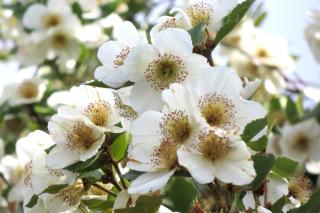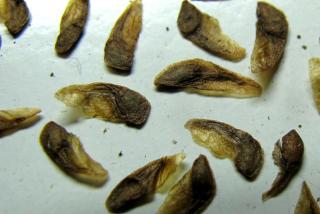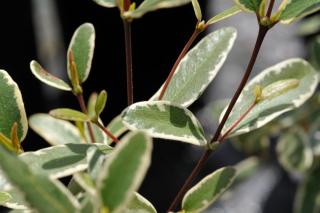

A remarkable tree with a slender silhouette, Eucryphia also stands out thanks to its immaculate white blooming which smells like a fragrance from Heaven.
Eucryphia key facts
Botanical name – Eucryphia
Family – Cunoniaceae
Type – tree
Height – 30 to 130 feet (10 to 40 meters) depending on the species
Width – 3 to 10 feet (2 to 3 m)
Exposure – sun to part sun
Soil – not chalky but cool and well-drained
Hardiness: 5 to 19°F (-7°C to -15°C)
Flowering – summertime
Foliage – evergreen (only Eucryphia glutinosa is deciduous)
Native to Chili (where it’s called ulmo), Argentina and to Tasmania, Eucryphia is a tree that must see a few requirements fulfilled to truly thrive. It thus loves mild and moist climates, typically those along coastal areas. Best is to find a luminous spot for it that is sure to stay sheltered from wind and cold. Soil that isn’t chalky is also necessary.
Planting should take place in fall, preferably. Roots will have time to spread out around the tree during winter and spring, and it’ll have a better chance to survive any possible drought in the following summer. Planting in spring remains possible. However, the young sapling will be much more fragile if ever it lacks water.
 Dig a large hole, it should be deep enough that roots can spread unfettered in loose, broken up soil.
Dig a large hole, it should be deep enough that roots can spread unfettered in loose, broken up soil.Smart tip : to keep moisture around the foot of your Eucryphia, you can spread a few inches (5-10 cm) of mulch. In this particular case, bark mulch will do great. It has the particularity of acidifying the soil slightly.
 Once it has matured, Eucryphia doesn’t require any specific care. However, you do have to watch over the sapling during the first few years. A couple simple tasks will help your young tree grow in a proper way:
Once it has matured, Eucryphia doesn’t require any specific care. However, you do have to watch over the sapling during the first few years. A couple simple tasks will help your young tree grow in a proper way:
Even though Eucryphia supports pruning very well, it isn’t an obligation. There are only a handful of cases when it’s really mandatory:
Eucryphia isn’t vulnerable to diseases, nor to pests.
 Eucryphia propagation works in either of three ways: sowing, layering, and preparing cuttings. Sowing is a long and arduous process. Indeed, seedlings grow so slowly it takes 2 to 3 years after germination before you can transfer them to the ground in the open. Air layering works, but it’s sometimes a bit complicated to set up, and results aren’t guaranteed.
Eucryphia propagation works in either of three ways: sowing, layering, and preparing cuttings. Sowing is a long and arduous process. Indeed, seedlings grow so slowly it takes 2 to 3 years after germination before you can transfer them to the ground in the open. Air layering works, but it’s sometimes a bit complicated to set up, and results aren’t guaranteed.
Overall, the best manner to obtain new specimens is to prepare cuttings in July-August. For that,
Roots will take from one to six months to form. Once roots are ready, new buds will form. In the following year, you can transplant your cutting to a larger pot, and usually the year after you can transfer it to the ground already.
Tip: before sticking your cutting into the soil, make a hole in the pot first with a twig or a pencil. That way, when you slide the cutting in, the rooting hormone slides down with the stem instead of brushing off and staying around the surface.
 To fully take advantage of its majestic bearing, its best to plant your Eucryphia as a standalone, without any other large noteworthy tree nearby (lime, chestnut tree, plane tree…). Once it has grown a bit, you can set a flower and/or shrub bed underneath to highlight the tree. Select plants that love shade for this.
To fully take advantage of its majestic bearing, its best to plant your Eucryphia as a standalone, without any other large noteworthy tree nearby (lime, chestnut tree, plane tree…). Once it has grown a bit, you can set a flower and/or shrub bed underneath to highlight the tree. Select plants that love shade for this.
The flowers of this tree are similar to those of white hellebore; this makes it a great companion plant to have those cute blooms in both summer and winter!
 Eucryphia cordifolia: towers to 130 feet tall (40 m).
Eucryphia cordifolia: towers to 130 feet tall (40 m).Above/right, Eucryphia lucida ‘Spring Glow’ boasts variegated foliage.
If you’re into beekeeping, you should know that Eucryphia will lead your bees to produce an extremely fragrant and tasty honey.